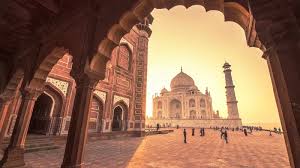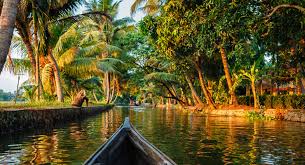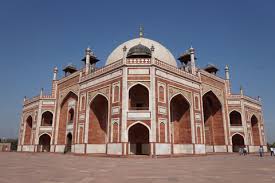Confluence of Cultures: Unveiling India’s Architectural Tapestry
A Symphony of Styles, Crafted in Stone Do you know that India’s architectural marvels are not just monuments of grandeur but living testimonies to the rich tapestry of cultures that have woven their way into the fabric of this incredible nation? From the majestic Mughal masterpieces to the intricate temples adorned with exquisite carvings, each structure tells a captivating story of multicultural influences, artistic exchanges, and the harmonious coexistence of diverse traditions. Get ready to embark on an extraordinary journey through India’s architectural heritage, where every arch, every dome, and every intricate detail reveals the confluence of cultures that have shaped this land. The Mughal Legacy – Grandeur and Opulence Imagine standing before the awe-inspiring Taj Mahal, a monument that has captivated the world with its ethereal beauty and architectural grandeur. As you gaze upon its intricate marble inlays and the intricate calligraphic inscriptions, you’ll be awestruck by the seamless fusion of Persian, Islamic, and Indian influences that have come together to create this masterpiece. But wait, there’s more! You’ll be fascinated to learn that the Mughal architectural style, with its distinctive domes, arches, and ornate decorative elements, was not just a testament to the empire’s might but also a reflection of the cultural exchange that took place between the Mughals and the indigenous artisans and craftsmen. The Temples of South India – Intricate Wonders Journey to the captivating landscapes of South India, where ancient temples stand as architectural marvels, adorned with intricate carvings and sculptural splendor. Prepare to be mesmerized by the exquisite craftsmanship of the Hoysala and Vijayanagara temples, where every inch of stone is adorned with intricate carvings and mythological depictions. Not only do these temples showcase the artistic brilliance of the region’s sculptors and artisans, but they also bear witness to the cultural exchange that occurred between the Hindu traditions and the influences of the Chalukya, Hoysala, and Vijayanagara dynasties. The Indo-Islamic Architectural Synthesis Venture into the heart of India, where the legacy of Indo-Islamic architecture has left an indelible mark. Prepare to be captivated by the harmonious fusion of Islamic and Hindu architectural styles that can be witnessed in the grand monuments of cities like Delhi, Agra, and Fatehpur Sikri. From the intricate jali work and arched entrances to the ornate carvings and motifs, these structures are a testament to the cultural exchange and artistic collaborations that took place between the Mughal Empire and the indigenous craftsmen. The Portuguese Influence – A Coastal Tapestry Journey to the coastal regions of India, where the Portuguese influence has left an indelible mark on the architectural landscape. Prepare to be enchanted by the unique blend of European and Indian styles that can be witnessed in the churches, forts, and historic buildings of cities like Goa, Daman, and Diu. From the ornate baroque facades to the intricate woodcarvings and stucco work, these structures are a testament to the cultural fusion that occurred when the Portuguese traders and settlers interacted with the local artisans and craftsmen. Embracing the Multicultural Spirit As you delve deeper into India’s architectural tapestry, you’ll be struck by the profound spirit of cultural exchange and harmony that permeates each structure. From the grand monuments of the Mughals to the intricate temples of the South, these architectural wonders stand as living testimonies to the power of collaboration, artistic fusion, and the embracing of diverse influences. Preserving the Architectural Legacy As we bid farewell to this captivating journey, remember that India’s architectural heritage is not just a collection of stunning structures; it is a living embodiment of the nation’s rich multicultural history and the enduring spirit of artistic exchange. It is our collective responsibility to preserve and promote these architectural marvels, ensuring that the stories they tell, the cultures they represent, and the artistic traditions they embody continue to inspire and captivate generations to come.









